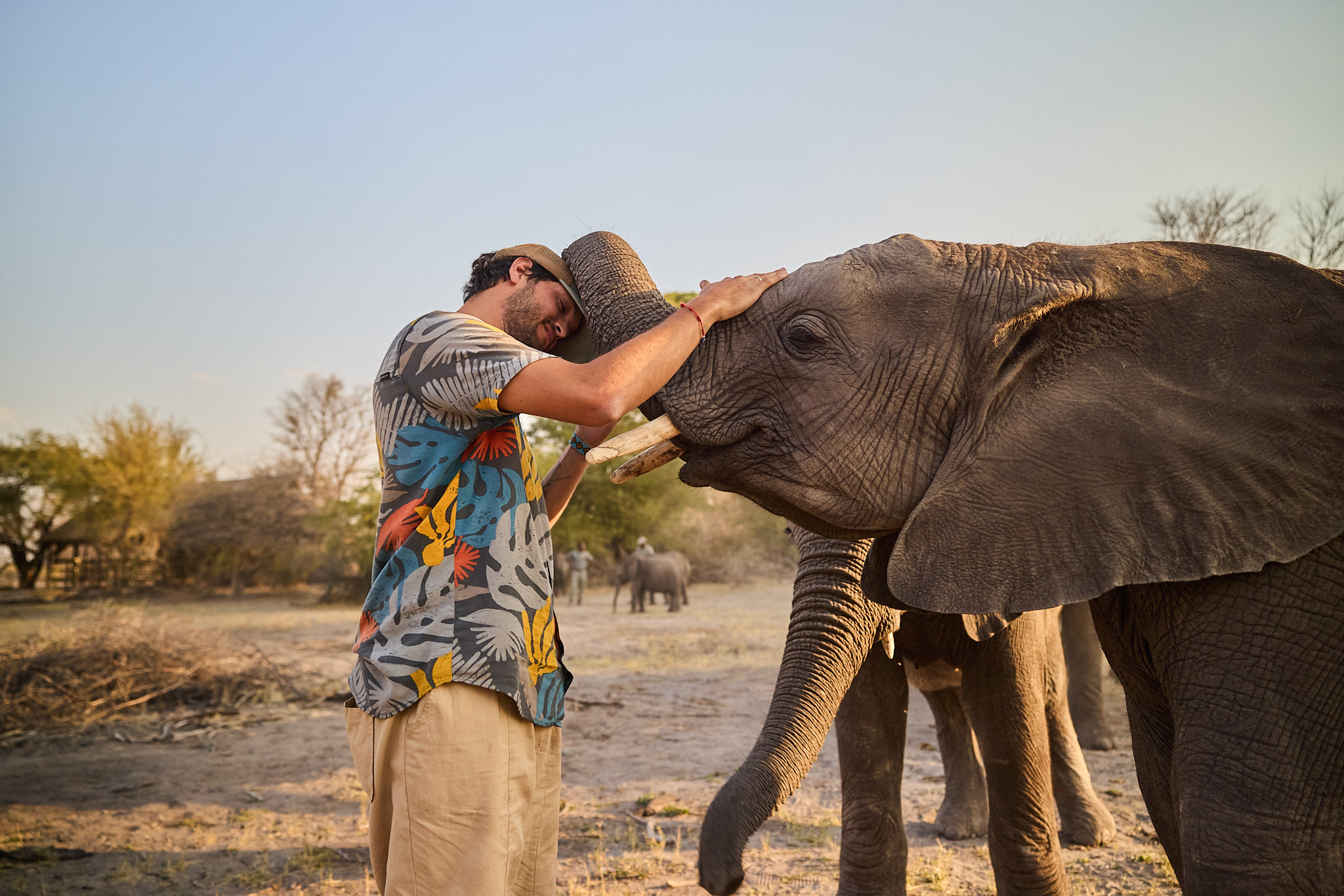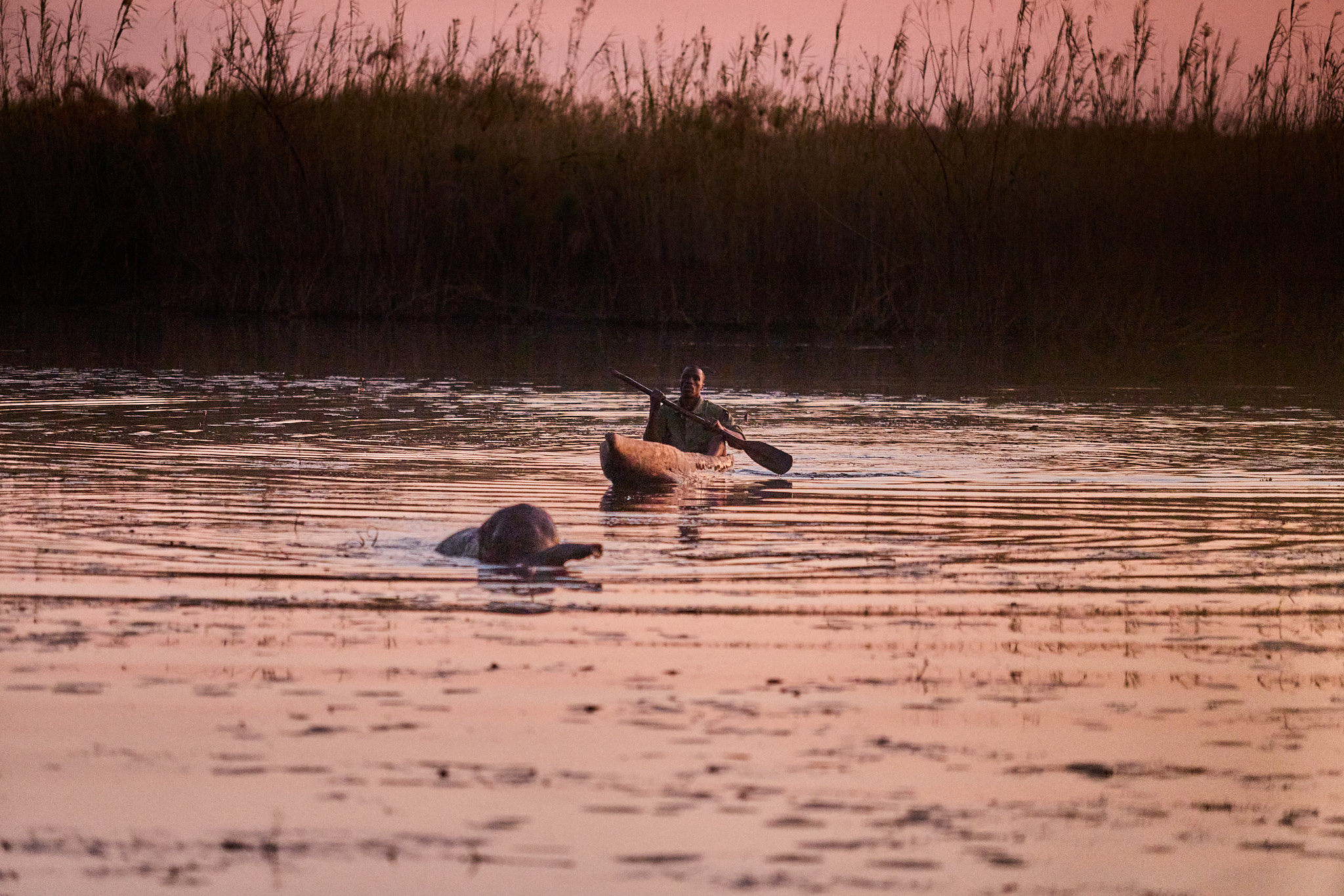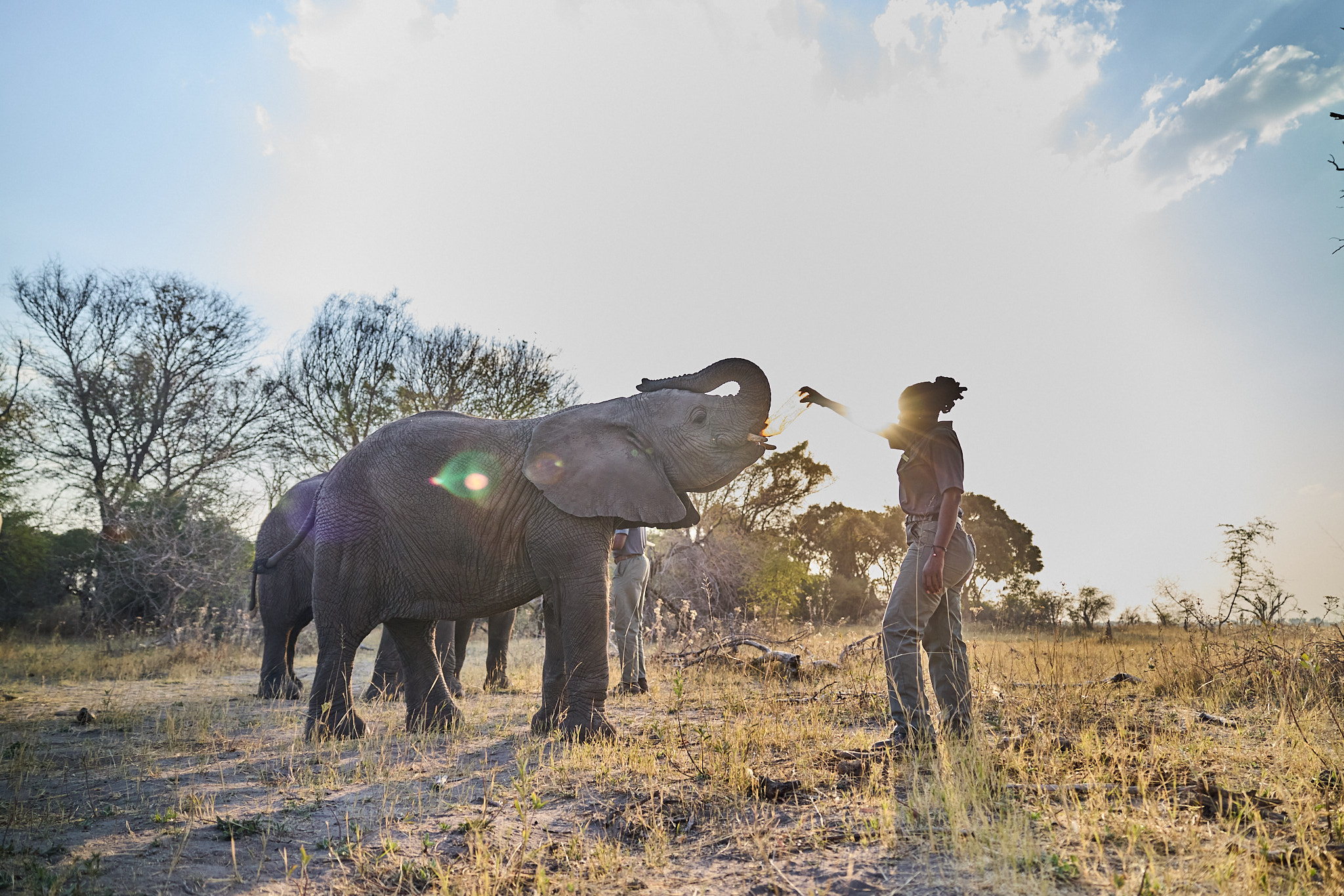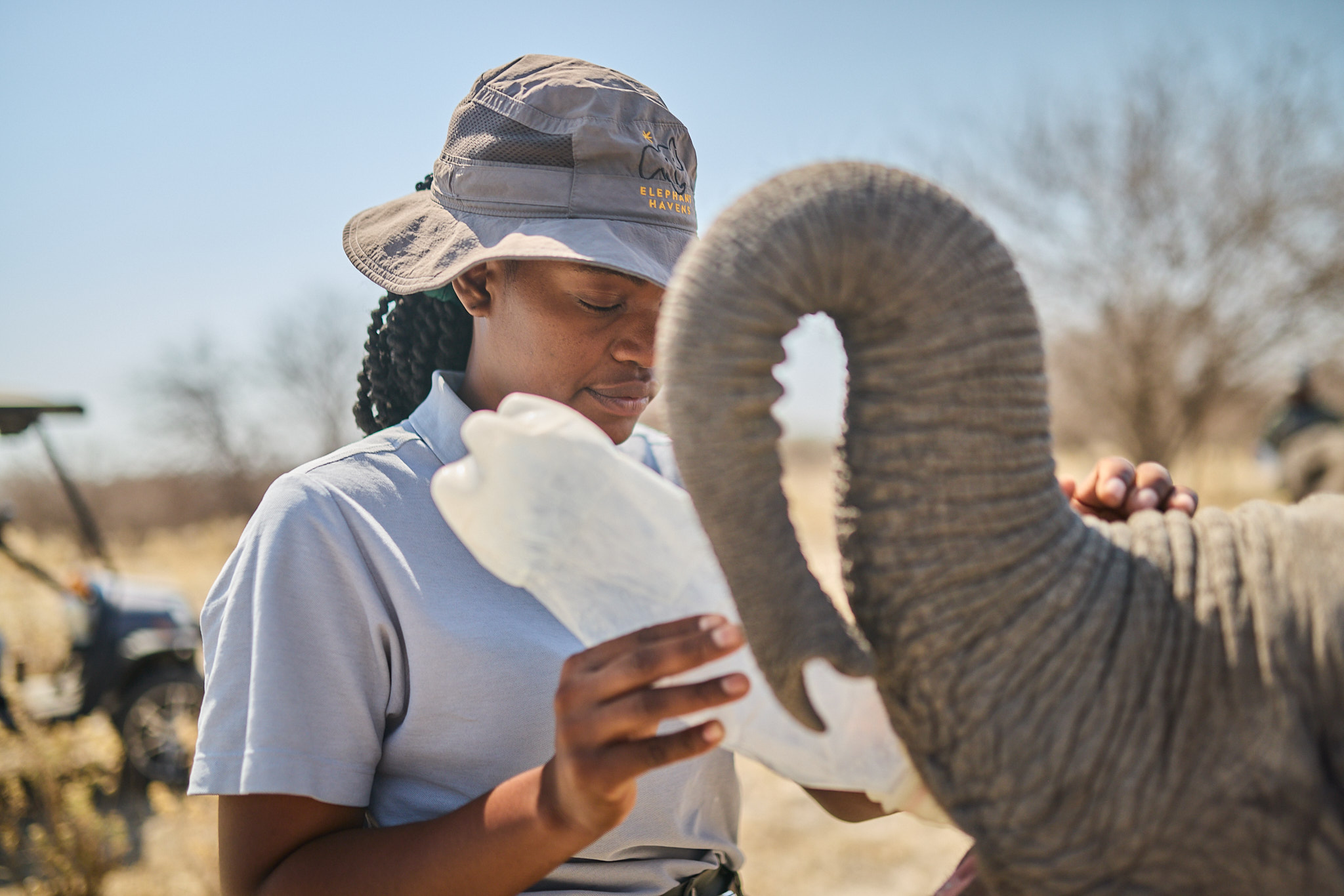What I felt behind the lens
in the Okavango Delta
We went to the Okavango to document elephant conservation. We came back with something far bigger.

It’s wild how much we can grow just by witnessing how others live, what they protect, what they fight for. My trip to Botswana didn’t start on African soil. It started nearly three years earlier, one quiet Sunday afternoon, on my couch, with a mate in hand and a National Geographic special playing on my laptop.
That was the first time I saw the Okavango Delta. I didn’t know it then, but something sparked. If I don’t watch, read, listen, if I don’t take in what others have seen, I can’t tell stories myself. That’s the fuel. That’s how I ended up in the Okavango with a camera in my hand. But a lot had to fall apart and rebuild before I got there: moving to Spain, shutting down my production company, losing my way, finding it again, freelancing, falling in love, learning to trust, and finally, setting out on a journey that would shift everything.
Not because Africa magically heals you. But because I needed to move. I needed to reconnect with what I love most: telling stories. I’d had a camera in my hands for seven years, but lately, I was going through the motions. The spark was fading. And so I went: to the Okavango, to the Maasai, to the war in Goma, to the waves, to friends, to stories. Each day on that trip was different. Some frustrating, some filled with joy. Some tested our patience, others cracked us open. On March 21st, 2024, I flew to the Democratic Republic of Congo with Pedro, a journalist friend, and Zelmi, my partner and producer. Africa wasn’t new to me. I’d visited several times over the past six years, but this trip was something else: seven months, twelve countries, one documentary mission.
We documented the Maasai Mara, explored coral restoration off the coast of Kenya, and listened to stories of genocide and healing in Rwanda. We crossed Malawi, Zambia, Namibia, Botswana, Senegal, Sierra Leone, Liberia, and Ghana. But I keep going back to that Sunday afternoon on the couch. I didn’t know how to start the week. I just knew I wanted to tell stories—about people, about elephants, about climate change. I felt the fire.

That fire led me to a random Linkedin message. Just two friends looking to plan a trip. Somehow, that turned into a story about Kay, the first woman in Botswana to work as an elephant caretaker. We had no real itinerary. It was just me and Zelmi, chasing stories and moments and breathers. Always the stories.
The Okavango Delta sits in northern Botswana, but its story starts way upstream, in the highlands of Angola. A river is born there, flows through Namibia, and spills into this massive, landlocked wetland. The water never reaches the ocean. It simply soaks into the sands of the Kalahari and vanishes into thin air. It’s the world’s only inland delta. A mirage that’s actually real.
During the rainy season, it can spread across 15,000 square kilometers, becoming one of Africa’s most biodiverse ecosystems. That pulse of water brings life to thousands of species — and sustains a key population: elephants. Botswana is home to the largest concentration of elephants on the continent, many of them protected in this natural sanctuary where they roam freely — unlike other countries like Namibia, where parks are often enclosed by fences. But that same freedom also fuels tension with local communities. Elephants destroy roads, infrastructure, crops — and sometimes, tragically, hurt people. It’s a crisis that demands more than conservation. It demands coexistence. And that begins by listening to every voice.
Two things made this story happen. First, a friend who said, “We’re ready to travel with you guys.” Second, a call with Pelorus Foundation and Elephants Havens. That’s when we learned we’d be able to document Kay’s story. From there, everything kicked off: dates, logistics, production chaos, the works.Before arriving at the elephant orphanage, we did a mini road trip through Namibia and Botswana with friends. It gave us time to soak it in, scout the vibe, and get a feel for the place before flipping into full documentary mode.
Like most stories, this one started with a single message. But after that, it was all legwork. Calls, research, interviews, a million emails. Elephants Havens is a nonprofit dedicated to rescuing and rehabilitating orphaned elephants—most victims of poaching or human-wildlife conflict. But they don’t stop there. They work with local communities to build understanding and encourage peaceful coexistence. Education is just as crucial as protection.

""We made friends. We exchanged stories. We learned to slow down. Sometimes, the most meaningful moments happen when you set the camera aside and simply be."
Once we arrived, we spent a full day just watching. Learning the rhythm. At Elephants Havens, the elephants call the shots. Days start at 6am with a team prayer, a check-in meeting, then it’s off to the stables for feeding. The caretakers walk with them through the bush. Whether the elephants want to eat, rest, or splash in the water. It’s all on their terms. The team follows their lead. They care deeply. They laugh with them. They hug them. They love them.
We made friends. We shared stories. We learned to pause. Sometimes the best thing you can do is put the camera down and just be.The only way this story worked was by truly connecting. That’s what made it real. That’s what gave it heart. This wasn’t about grabbing footage. It was about walking with the elephants, feeding them, living alongside the team. That’s where the story lives.We even got to be part of a rescue. And it didn’t go how we hoped.
We were told we’d be leaving early to find an orphaned elephant a few hours away. I was hyped. A real-life elephant rescue? As a documentarian, it doesn’t get more raw than that. We rode eight hours in the back of a truck—dusty, sunburned, exhausted, but smiling. Because a few years ago, this felt impossible.

We spent three days on that rescue. Everything was in place. Vets, local guides, transport, the works. We found the elephant in the water. But he wouldn’t come out. And unless he did by nightfall, his chances were slim. He was scared. He knew threats lived on land. He didn’t know we were there to help. We waited for hours. Slept in shifts. In the morning, we found him dead.It crushed us.That kind of moment hits you in the chest. No words. Just stillness. But nature doesn’t bend to our timelines. Not everything works out. Sometimes the heartbreak is part of the story. And that’s the beauty of this work—it’s real. It’s wild. It’s unfiltered.
Nature doesn’t do retakes. We film what happens. And this is what happened. Our time there was unforgettable. We camped out in the Okavango. Walked for hours looking for elephants. Sat by the fire when the cold set in. Shared meals. Shared silence. Shared awe. I saw stars like I’ve never seen before. And I remembered why I do this. Holding a camera is holding power. It’s access. It’s connection. It’s a way to show people a world they might never see. To inspire, to act, to protect.
This documentary gave us Kay. Thousands of miles from Argentina, our home. A woman we’d never have met without a camera between us. Her own people didn’t understand why she wanted to protect animals that sometimes destroy roads, eat crops, even kill people. But she knew coexistence was possible. She saw the bigger picture. That caring for an elephant is, in many ways, an act of mothering. And in that bond, there’s hope.
Twice a month. A message from our hearts.
Sign up for updates on outdoors, adventure, climate and sustainability.




